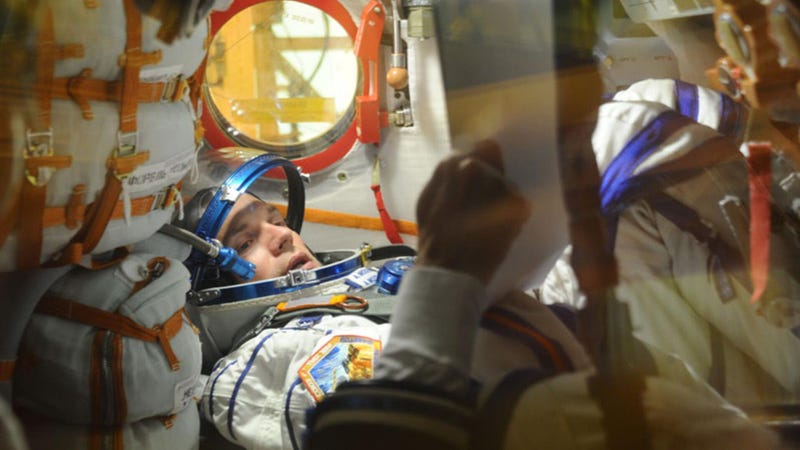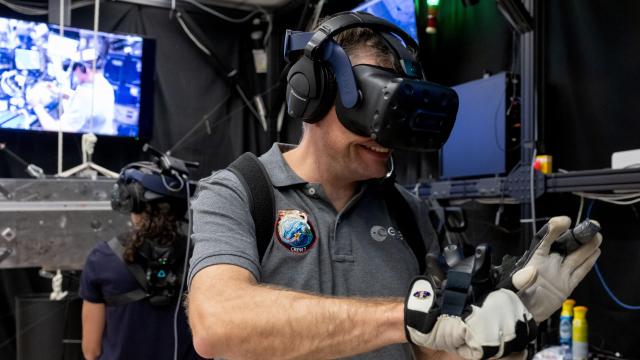Nearing the end of an unintended year in space, NASA astronaut Frank Rubio reflected on Earthly pleasures that he was eager to indulge in as soon as he returned home. “I think just going out in the yard and enjoying the trees and the silence,” Rubio said during a live broadcast from the International Space Station (ISS) in late September. “Up here, we kind of have the constant hum of machinery…so I’m looking forward to just being outside and enjoying the peace and quiet.”
Astronauts on board the ISS are confined within the 356 feet (109 meters) of the orbiting station, spending at least six months at a time within the isolation of low Earth orbit. Hoping to alleviate the toll space missions can have on astronauts’ mental health, a healthcare platform teamed up with a virtual reality brand to create the first VR headset aimed at curing homesickness in space.
XRHealth collaborated with HTC Vive to reconfigure its Vive Focus 3 headset so that it can be used in the microgravity environment. “The goal was to deliver similar experiences to what they would have if they were with us on Earth,” Thomas Deximier, assistant vice president of Enterprise Solutions at HTC, told Gizmodo.
The headset will launch to the ISS as part of SpaceX’s 29th commercial resupply mission, which is currently scheduled for November 7 at 9:16 p.m. ET. European Space Agency astronaut Andreas Mogensen, who launched to the space station on August 26 as part of the Crew-7 mission, will be the first to try the headset in the microgravity environment.

“I’ve never been to space myself but I hear that when they’re on a mission, astronauts live in a pretty cold and sterile, stressful environment,” Deximier said. “I can’t even start to imagine myself being completely cut out of the real world.”
The biggest issues that astronauts struggle with are isolation and confinement, as well as the lack of fresh air and natural light, and reduced sensory stimulation. In order to alleviate the risk these stressors might have on astronauts’ behavioral health, NASA provides LED lighting, noise cancelling earbuds, sleep masks, and private sleep pods. Those small comforts, however, can only do so much.
Immersive technology has been used as an emerging tool to treat mental health issues like stress, anxiety, and depression. For astronauts on board the ISS, the headset is designed to simulate soothing environments on Earth such as swimming with dolphins, hiking a mountain trail, or watching the sunset over a lush hill landscape. “The main experiment that they want to conduct here is to see if virtual reality can have that stress relieving effect on astronauts because we know it works on Earth,” Deximier said. “It’s allowing them to let their minds wander.”
The tricky part was developing a virtual reality headset that would work in a microgravity environment. VR headsets rely on gravity vectors for orientation, basically to know what’s up and what’s down. In a microgravity environment, however, everything is mixed up, necessitating adjustments to the headset’s design to prevent motion sickness among astronauts. To enhance stability and reduce motion sickness in the microgravity environment of space, the HTC Vive team made strategic changes to the headset’s anchor points. They mounted one of the anchor points on a controller that is securely fastened to the space station itself. This adjustment ensures that the headset uses the space station as its primary point of reference, rather than relying on the surrounding environment, which can be disorienting in space.
“So you want to have a reference point that moves with you and you have to have your physical world and your virtual world in full synchronicity. Otherwise, it just messes up with your senses,” Deximier explained. “We look at how the headset is moving and we basically kind of offset one movement against the other.”
Mogensen will be testing the headset for the remainder of his mission, which is set to last until early 2024. Based on the astronaut’s experience, the company will decide where to go from there. “We’ll be waiting to hear what they have to say and hopefully we are aligned on the expectations as to the self relieving effects of VR for mindfulness and well being,” Deximier said. “We’re just going to be patiently waiting to see this thing leave Earth, and hopefully everything works as planned.”
